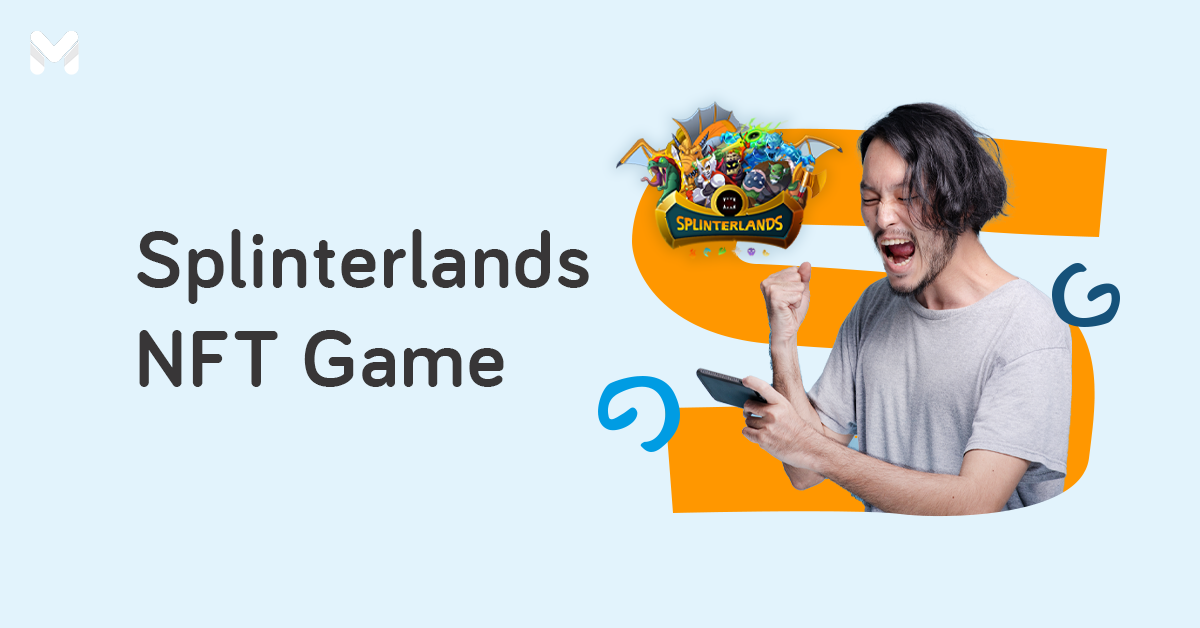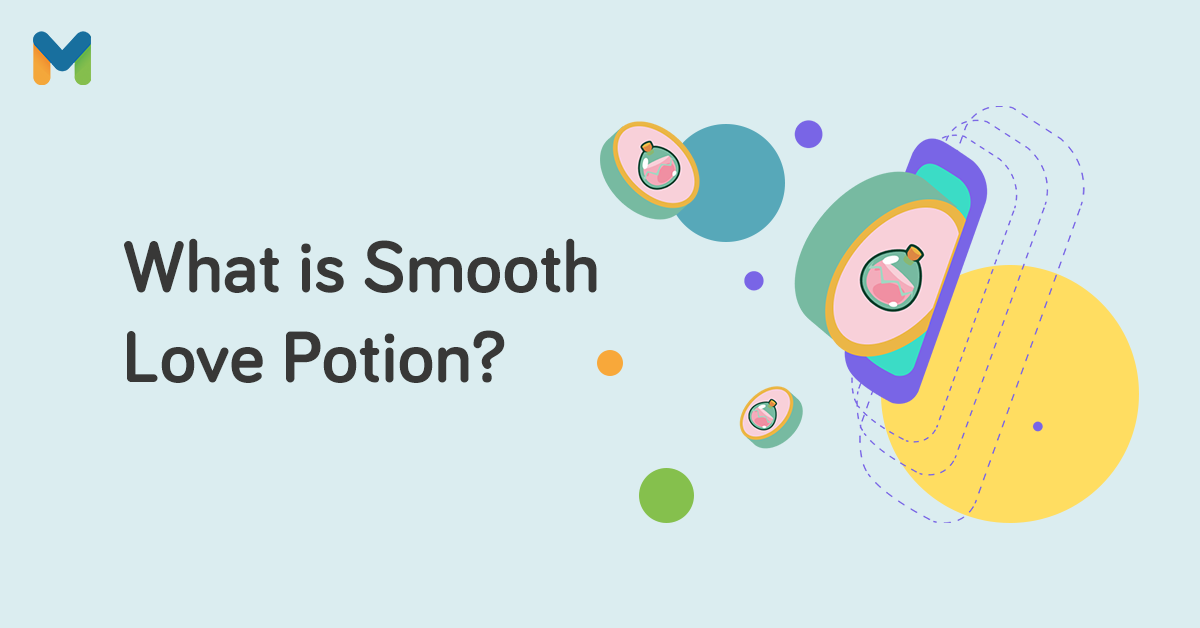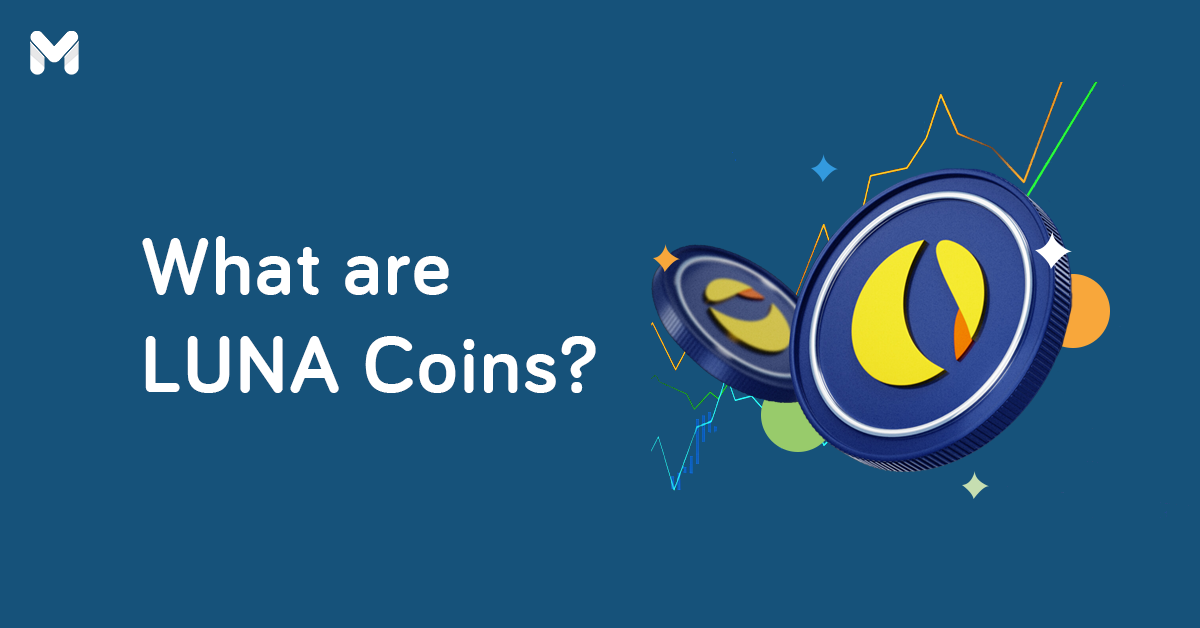In the world of investments, artworks such as paintings and sculptures are considered high-value assets. What makes each work of art valuable is its uniqueness. Traditionally, you can buy these pieces through brokers and private galleries.
But in recent years, the art market entered a new era of digitalization, thanks to blockchain technology. This advancement is unprecedented, and many―from common folks to celebrities―are jumping on the bandwagon. Enter the non-fungible token or NFT.
These days, NFTs are often the subject of memes and serious conversations among crypto investors not only because of their unique nature but also because of how they democratize art trade. But what is an NFT and how does it work?
In this article, we’ve made the concept of NFT in crypto as easy to understand as possible. More than that, you’ll see its real-life applications that go beyond art and learn how to make your own NFT.
Before Anything Else: What’s the Difference Between Fungible and Non-Fungible Assets?
Before diving into NFTs, it’s important to know what the word “fungible” means. Fungible simply means that an item can be exchanged for another item of the same type or value. The rule is, no one in the swap should lose any value.
Money, whether physical or crypto, is a good example of a fungible asset. If you exchange ₱1 for another ₱1, you’ll get the same amount.
On the other hand, a non-fungible item cannot be exchanged for another item of equal value. Examples of non-fungible items are art pieces, memorabilia, collectibles, and diamonds. You can’t easily exchange them for similar items because they have unique properties that affect their value.
In the case of diamonds, these unique properties are their age and their cut. As a result, determining their value or selling them requires more time and attention.
Read more: Compare the Best Cryptocurrency Trading Platform in the Philippines!
Unique and Irreplaceable: Understanding NFTs
Non-fungible tokens are basically tokens that represent and prove a person’s ownership of a digital asset. When an original digital file, such as an artwork or a document, is turned into a token on a blockchain, it becomes unique and irreplaceable. Hence, the person who buys the tokenized digital asset is considered its only official owner.
What is NFT in Crypto and How Does It Work?
NFTs, just like cryptocurrencies, exist on a blockchain. To refresh your memory, a blockchain is a public ledger that facilitates the recording of different transactions.[1]
The whole system is designed to be unhackable or uncheatable. As a result, forging or manipulating an NFT asset will be impossible. Because of the blockchain’s set-up, only one person can own a tokenized digital asset at a time.
It’s worth noting that the majority of NFTs are found on the Ethereum blockchain. Nevertheless, there are a few blockchains that support them.
Still Complicated? Consider This Example
To help you understand NFT in crypto further, put yourself in the shoes of a K-Pop fan for a while. You took a rare photo of your favorite K-Pop idol at a concert. Technically, it’s the only photo that exists in the world. But once you upload it online, lots of fans will download or take a screenshot of it. The sad reality is that the said photo can be copied infinitely. When that happens, it will be hard for you to claim that you own the original copy of that photo.
But if you turn that photo into an NFT, the blockchain will recognize you as its official owner, unless you sell it, of course. Even if a million copies of that photo exist online, you can easily prove that the original copy is under your name by showing a certificate of ownership.
If you’re a digital artist, a video editor, or even a meme maker, you can protect your ownership over your work by turning it into a token. And when your digital asset becomes a token on the blockchain, it also becomes non-fungible online since it’s unique, and its valuation requires careful speculation.
Can You Give Me More Examples of NFTs?
NFT in crypto has many different applications. In theory, anything that requires proof of ownership can be turned into an NFT. Here are some examples.
1. Digital Art
Because of its intangible properties, digital art pieces can be easily turned into NFTs. One good example is the product of Paris Hilton’s collaboration with SUPERPLASTIC, a company that creates animated celebrities and vinyl toys. Together, they created three unique pieces of digital art. In April 2021, Hilton’s Iconic Crypto Queen was reported to be selling for $1.1 million.[2]
In the Philippines, actress and “It Girl” Heart Evangelista has joined the NFT movement as well. With the help of NFT artist Luis Buenaventura and composer Rodel Colmenar, she launched a digitized and animated version of her painting last year.
2. Photographs
As mentioned earlier, photographs can also be tokenized and sold as an NFT. One of the best examples in recent memory is the series of selfies sold by an Indonesian student named Sultan Gustaf Al Ghozali. Ghozali took expressionless selfies of himself daily for five years. Then, he sold these selfies as NFTs as a joke. The album, which contains over 900 pictures, was entitled “Ghozali Everyday.”
Ghozali initially priced the pictures at $3. As of January, the photo collection has a total trade volume of more than 380 ether. This is equivalent to over $1 million.[3]
3. Music
Yes, songs can be sold as NFTs, too! Mean Girls actress Lindsay Lohan released a song entitled “Lullaby” as an NFT, which was reportedly sold for $50,000. Locally, multimedia superstar Nadine Lustre released her first audio NFT, which is her song “Wait for Me.” The single, which has more than 1,000 editions, is up for sale at around ₱1,500.[4]
4. Digital Collectibles
Digital collectibles, like their physical counterpart, are limited-edition copies of a digital asset. It can be a video clip, a portrait, or a digital trading card. In 2021, legendary boxer Manny Pacquiao released an NFT of his moving portrait, which was created by Kenson Lee, a motion graphics designer based in Los Angeles.
If you’re an ARMY who collects countless BTS merchandise, you may soon find yourself foraying into the world of NFTs, too. This is because BTS will be releasing photo cards as NFTs on Upbit, a South Korean crypto exchange.[5] The initial launch of these digital collectibles is expected to take place in the first half of 2022.
5. Viral Videos and Memes
Viral videos can be minted as NFTs. So if you happen to own one, you might as well sell it off. The trade can be very lucrative, too. Take “Charlie Bit My Finger” for example. Considered as one of the earliest viral videos online, the 2007 YouTube clip was sold as an NFT for more than US$760,000. That’s around ₱38 million!

The same enterprise applies to memes. The meme “Disaster Girl,” which shows a girl staring smilingly at the camera while a house burns in the background, was reportedly sold for $500,000 at an auction.
Read more: Best NFT Apps Every NFT Collector and Enthusiast Should Have in 2022
6. Game Assets
NFTs have taken the gaming world by storm. When you play NFT games, it means that the currencies and assets you own in the game’s universe have real-life monetary value.
The best example of an NFT game is Axie Infinity, where you collect, raise, and battle pet monsters called Axies. These Pokémon-like creatures are actually NFTs, which you can buy and sell at the game’s marketplace. Lunacia, the home of the Axies, is composed of tokenized land plots. And because these digital lots are NFTs, you can buy, sell, and even rent them out to other players.
See also:
- Play to Earn: Make Money While Having Fun with These 21 Crypto Games
- Garena Shells: Guide to Buying and Claiming the Currency of League of Legends, Call of Duty, and More
7. Domain Names
Because unquestionable ownership is the main benefit of NFTs, the trade has started permeating the web domain name industry where uniqueness is a major currency. Those wanting to make their own websites not just memorable but also secure can use NFT domains.
NFT domains are basically web extensions (like .com, .net, or .info) that are connected to a public blockchain instead of the conventional domain name system.
Using an NFT domain comes with a lot of benefits. For instance, once you buy it, you own it forever since it’s non-fungible and irreplaceable. There’s no need to renew it since it doesn’t expire. When you use an NFT domain name, your website’s also ready for cryptocurrency-related activities, such as receiving crypto via the blockchain networks.
8. Documents

Digitizing important documents is a must, knowing they always run the risk of getting lost or damaged. If you’re starting your digitization efforts, consider tokenizing your docs. You can put your college diploma, birth certificate, land title, and equally important papers on the blockchain to keep them from getting lost. This measure also protects you from identity theft.
You can also apply NFTs to your business. If you’re a concert or event organizer, you can tokenize the tickets to avoid counterfeiting and scalping.
Where Can I Buy and Sell NFTs?
The NFT industry has gotten big, and its future looks bright. A strong testament to it is the emergence of different NFT marketplaces. Here are some of the most popular ones.
- Rarible
- OpenSea
- Binance NFT
- SuperRare
- Axie Infinity
- Crypto.com
- Zeptagram
- Venly
- Nifty Gateway
- Async Art
- Mintable
- KnownOrigin
- Valuables
How to Buy NFTs?
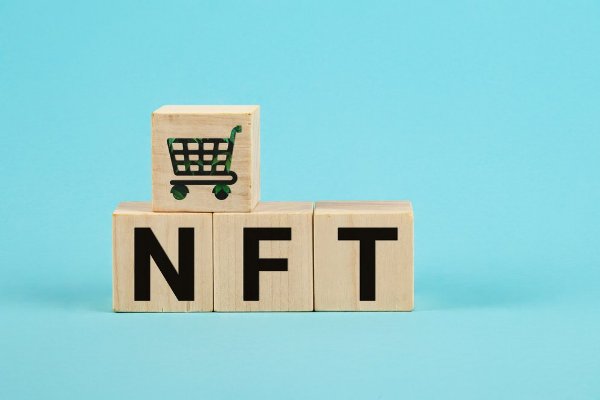
Just like tangible art pieces and collectibles, NFTs may be treated as investments. But always proceed with caution since the market is highly speculative. It’s driven by hype, uncertainty, and scarcity, and FOMO. If you’re not investing, you can treat each purchase as your way of supporting the artist or creator.
Here’s how you can buy NFT art online:
1. Open an Account at an Ether-Compatible Exchange
Most NFT marketplace transactions run on the Ethereum network. As such, you’ll need to have Ether, which is Ethereum’s native token. This is what you’ll use to buy an NFT. Open an account at an exchange that supports Ether, such as Binance, Gemini, and Coinbase. Once you have an account, start buying your tokens.
2. Get a Crypto Wallet
Your crypto wallet should be Ethereum-compatible. Crypto wallets don’t just store coins but also NFT assets. Some of the most trusted digital wallets out there include MetaMask, Argent, and Guarda. You can also opt for hardware wallets (those that resemble flash drives) from brands such as Ledger and Trezor.
3. Choose an NFT Marketplace
Once you’ve purchased your tokens and set up your wallet, the next thing you’ll do is choose an NFT marketplace. Refer to the list above. Before creating an account at a marketplace, make sure that it can actually support your wallet.
4. Connect Your Crypto Wallet to the NFT Marketplace
After creating an account at your chosen NFT marketplace, you’ll have to connect your wallet to it. On your marketplace’s dashboard, look for a button that says “Connect Wallet” or anything similar to it.
5. Buy the NFT
Now that your wallet’s already connected to your marketplace account, you can start scouting for your NFT. Remember that some marketplaces implement a bidding system for NFT purchases. You’ll have to join the auction and win the bid if you want to get a certain NFT.
If you win the bid, the NFT is yours. Complete the transaction by paying for the item and the transaction fees.

How to Make Your Own NFT
As the world of digital art and collectibles heats up, you may be wondering how you can create your own NFT.
If you’re jumping on the bandwagon, you’re an early adopter, and this could be a way to create a passive income from digital assets—although it would require technical, creative, and marketing skills.
In general, if you’re a graphic designer, painter, or artist, making your own NFT is actually pretty easy. Your talent is your capital, which is an advantage. But of course, minting your NFT is where things can get so complicated, especially if you’re new in this space.
What is Minting NFT?
Minting NFTs is all about creating digital assets that you can own and trade. The process may be overwhelming for those who are not digitally savvy, but it essentially involves creating a digital file that contains data about the ownership of the asset.
The file is then stored on a blockchain, a distributed ledger that records all transactions. Minting NFTs can be used to create digital assets with real-world value.
For example, one popular use case is to create digital artworks that can be sold as NFTs. This allows artists to sell their work directly to buyers without going through a traditional gallery or art dealer. Another common use case is creating NFT digital collectibles, such as virtual cats or CryptoKitties.[6]
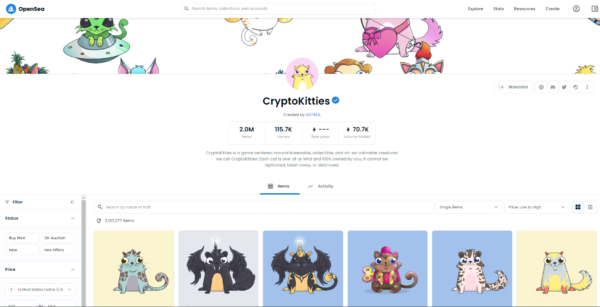
These collectibles can be traded on secondary markets, and they often have real-world value. You have breedable, collectible, and cute creatures, as each one is unique, minted in the blockchain. If you buy one, it’s 100% yours, and it can’t be reproduced, destroyed, or taken away.
If you visit the CryptoKitties OpenSea account, you’ll see two million items in its collection. The rarer the item, the higher its value. One of the highest-selling CryptoKitty is Dragon, which is worth 600 ETH (US$1,225,980.00) or approximately ₱64 million.
Yes, that’s how much you can sell a minted, one-of-a-kind item. But before you get excited about the income, continue reading about how you can get started on minting.
Can You Create Your Own NFT?
Yes, that’s how much you can sell a minted, one-of-a-kind item. But before you get excited about the income, continue reading about how you can get started on minting collections such as digital art.
4 Steps to Creating Your Own NFT
Step 1: Do your research
When creating and minting NFTs, doing your research is essential. You need to have a clear understanding of what an NFT is and how it works. You also need to be sure you’re creating an NFT that will be valuable to collectors.
Fortunately, several resources are available that can help you with your research. The first step is to familiarize yourself with the basics of blockchain technology and cryptocurrency. Once you have a solid understanding of how these underlying technologies work, you can begin to research the market for NFTs.
This will involve keeping up with news and developments in NFTs, identifying potential collectors, and understanding their needs and interests. NFT News Today[7] is an excellent source of information like news, feature articles, and interviews.
Rarity Tool[8] is a must-visit website that ranks and sorts NFTs by their rarity. Browse all rare items and collections to know what types of items are saleable in the market.
Step 2: Hire a graphic designer and negotiate the price
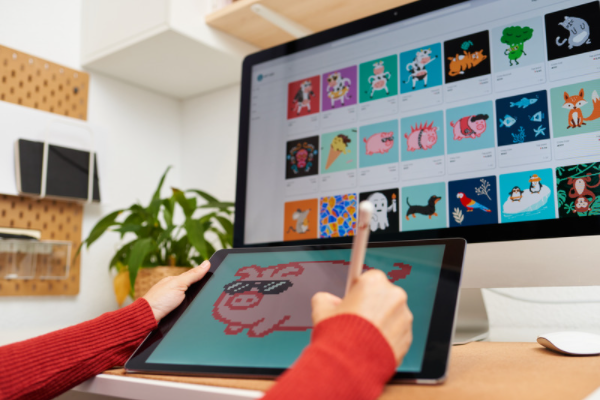
If you're looking to create an NFT and you're not an artist, it's important to hire a professional graphic designer who understands NFT. You can join Facebook Groups and find plenty of them locally.
Graphic designers are experts in visual communication, and they understand using images, typography, and color to create visually appealing and easy-to-understand designs. They also have the technical skills to execute their designs using industry-standard software programs like Adobe Photoshop.
They can turn your idea into a finished product that you can be proud of. While it’s tempting to create your own artwork if you want to make NFT a business in the future, hiring a graphic artist and designer can create unique designs for your collections that will make them stand out.
So, how much does a graphic designer charge on NFT projects? It depends on your collections and negotiations. Typically, some professional ones will charge ₱3,000 to ₱5,000 per item. So if you’re planning to have 100 unique items, you need to shell out ₱300,000 to half a million pesos.
Of course, for starters, you may want to consider working with amateur artists that charge less—in the end, you should use your negotiation powers to meet halfway on the price. You can also share royalties or just become partners with the project. Either way, earnings don’t come overnight. So better have clear expectations and agreement on your collections.
If you don’t want to shell out money, that’s okay. You can create your own NFTs through digital art that you can design yourself or even photos you’ve taken or any digital file you want to mint. Case in point: the previously mentioned Indonesian student who made a million dollars from minting his NFT selfies.
Step 3: Mint it on your preferred NFT platform
Now it’s time to mint your collection. The most popular platform is OpenSea, so here’s a quick tutorial on how to start minting NFT.
1. Visit the OpenSea website and click the small wallet-like icon.
2. Upon clicking the wallet, you’ll be prompted to connect your wallet provider like MetaMask, Coinbase, WalletConnect, etc.
3. Once you connect, for instance, to your MetaMask wallet, you’ll be prompted to fund your account. Click on “Add Funds,” and from there, you can deposit crypto from other wallets or buy using your credit or debit card.
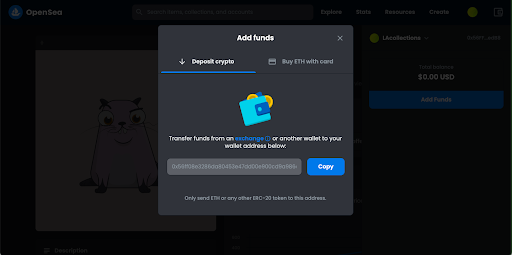
From there, you can start minting your collectibles. But always keep in mind the fees involved as mentioned above.
4. Click on “Create” on the upper right corner of the window to start minting. Upload the item you want to mint and fill in the details until the bottom of the page and click on “Create.”
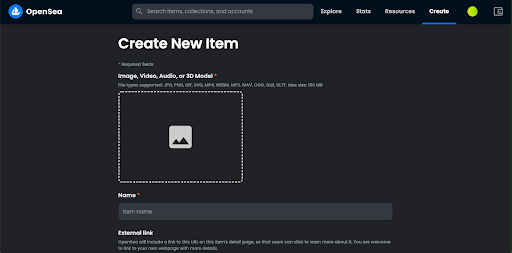
Keep in mind the initial fee, a one-time fee to start your wallet, plus a gas fee required for all minters to approve the NFT listing for sale. The gas fee depended on the network congestion level when you created the item. So better mint the item when the network is free or less congested.
Step 4: Promote your NFT collection
One important aspect of creating and minting NFTs is promoting your collection. By getting the word out about your NFTs, you can generate interest and excitement about your work.
In addition, promoting your collection can help you to find new collectors and buyers. By making your work visible to a wider audience, you can increase the chances that someone will be interested in acquiring your NFTs.
Social media is the best channel to promote your NFTs. Join local NFT groups if you want to target Filipino collectors, whereas you can join global NFT groups to increase your exposure to foreign buyers and collectors. Join the conversations on Telegram and Discord channels and build relationships with like-minded people.
By connecting with others interested in your work, you can create a network of fans and followers who can help spread the word about your NFTs.
Without promotion, it would be difficult to sell and monetize your NFT collections.
Can I Sell My Own NFTs?
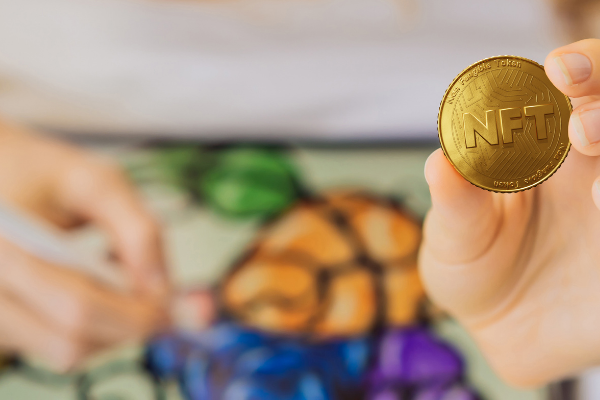
NFTs can benefit almost everyone, from artists to business people. If you’re a content creator or a designer, you can mint your work as a non-fungible digital asset, which you can then sell at the price that you like. Before you sell anything, we urge you to learn more about NFTs by reading supplementary materials or watching instructional videos.
But if you’re curious about the selling process, here are the steps that you need to take:
1. Before Anything Else, Buy Some Crypto
Open an account at an exchange that supports Ether. After setting up your account, purchase Ether tokens.
2. Get a Crypto Wallet
You can just store your Ether in your account at the exchange. But if you want your crypto to have an additional layer of protection, store it in a digital or hardware wallet.
3. Choose an NFT Marketplace
Treat NFT marketplaces as galleries where pieces of art are sold. Having said that, you need to find a gallery whose patrons actually appreciate the kind of art that you make. You’ll also have to take into account the marketplace’s compatibility with your wallet and the fees that it charges NFT creators.
Once you’ve ticked all your boxes, create an account at your chosen marketplace.
4. Connect Your Crypto Wallet to the NFT Marketplace
At this point, you’ll have to connect your crypto wallet to your NFT marketplace account. Initiate the process by clicking the button that says “Connect Wallet” or something similar to it.
5. Upload Your Digital File to the Marketplace
Now that your marketplace account is all set up, upload the digital file that you want to turn into an NFT. Generally, marketplaces accept popular file formats, such as JPG, PNG, WEBP, GIF, MP3, and even MP4.
6. Sell Your NFT Using Your Chosen Method
After the digital file is uploaded online, choose a selling method. Depending on the marketplace that you use, you can either sell your NFT at a fixed price or through a bidding. The latter is often employed to create hype and increase the value of the NFT.
7. Pay the Necessary Fees
Remember that marketplaces have a cut from the sale of your NFT. For instance, selling your work at OpenSea will incur a service charge of 2.5% and Creator Earnings of 10%. Overall, you’ll need to pay 12.5% of your NFT’s sale.
Final Thoughts
NFT in crypto has changed the concept of ownership forever. Among those who benefit the most from this blockchain wonder are the artists and content creators. They no longer have to chase people who duplicate, forge, or steal their works since they can easily prove that they’re the real owners of such pieces.
On the other hand, NFTs have also provided a new avenue for collectors and crypto investors. More than that, private individuals and enterprises alike are getting more creative when it comes to tokenizing assets. Indeed, the world has entered an era where things are much more centralized and transparent.

Sources:
- [1] What is Blockchain? (Forbes, 2022)
- [2] Paris Hilton Launches Own NFTs, Selling for Over $1.1 million (Yahoo! Finance, 2021)
- [3] Student Makes a Million Selling Expressionless Selfies as NFT (Business Insider, 2022)
- [4] Nadine Lustre Releases Audio NFTs (Rappler, 2021)
- [5] BTS to Move Forward with NFT Offerings Despite Backlash (Business Insider, 2021)
- [6] CryptoKitties Collection (OpenSea website)
- [7] NFT News Today
- [8] Rarity Tools
DISCLAIMER: Information published on this blog or elsewhere on www.moneymax.ph should be used for general information purposes only and does not constitute investment advice, performance data or any solicitation or recommendation that any security, investment product, transaction or investment strategy is suitable for any specific person. This material does not take into account your financial situation, risk tolerance level, investment experience or objectives; all of which are unique to you. Before acting on information on this blog, we suggest consulting an independent professional to advise you on the risks of any decision and the extent of any exposure to loss.







